Your basket is currently empty!
THE RELICS OF JERUSALEM AND THE LEGEND OF THE HOLY THORN GIVEN BY AN ANGEL TO A FARMER
THE RELICS OF JERUSALEM AND THE LEGEND OF THE HOLY THORN GIVEN BY AN ANGEL TO A FARMER
“Esiste una popolare leggenda,
di un angelo dalle sembianze di cavaliere,
che durante un periodo difficoltoso,
affidò uno scrigno ad un povero agricoltore,
sulla via per San Giorgio,
dove venne edificata la chiesetta del Crocifisso.
Un forziere arrivato con una nave sbarcata a Roccella
con delle sante reliquie dai poteri miracolosi:
le Sacre Spine della corona di Cristo,
una scheggia del legno della Croce,
un frammento del mantello insanguinato di Gesù
e del velo di Maria.
Questo straniero pronunciò anche un passo da far incidere sull’altare a perenne memoria
“Tuere nobile Gratterium” (Proteggere la celebre cittadella di Gratteri)”.
Nessuno ne capì il significato che sarebbe stato svelato
soltanto in occasione di futura pestilenza”.
(From “Gratteri da Crater, coppa Graal: grezzo diamante nella concava roccia” by Marco Fragale)
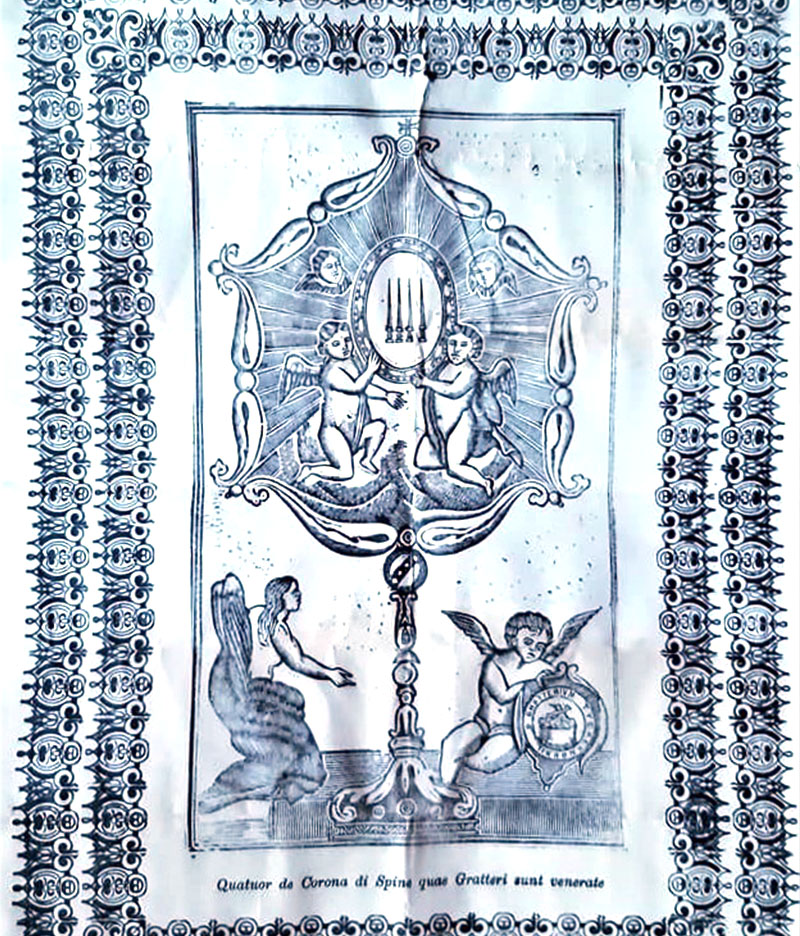
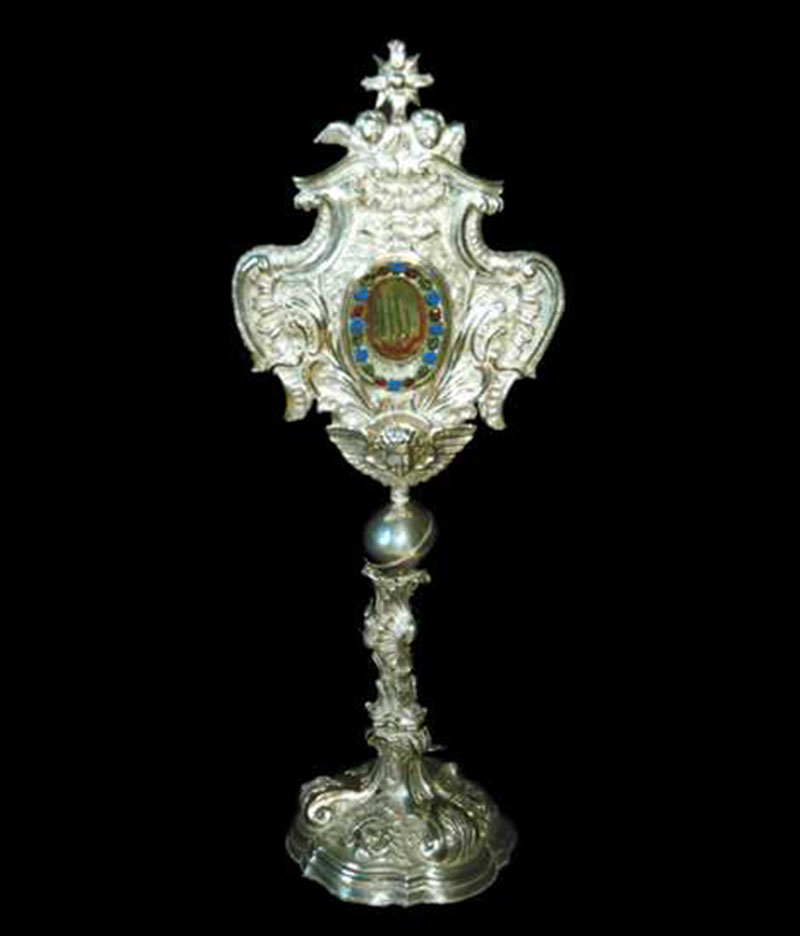
From the religious point of view, Gratteri holds a treasure of inestimable value: inside the Chiesa Madre in a side chapel, a sumptuous altar with an iron step contains precious relics from Jerusalem. One of these is particularly revered by the people from Gratteri since the middle Ages.
In fact, a precious silver reliquary houses four of the thorns (one of which is broken) which it is assumed to belong to the crown of Jesus Christ. According to historians of undoubted fame, such as Fazello, Pirri, Passafiume and others, have had cult and particular devotion in Gratteri since the times of Norman domination (Already in Scelsi I., 1981).
However, Carandino specifies that it was Ruggero d’Altavilla himself in the year 1097, returning from the First Crusade, who donated five sacred thorns of Christ’s crown to his favorite church (Cefalù); later three of them were robbed and transported to the land of Gratteri where a fourth, not whole, was added in the year 1580 to the baron of Gratteri, Don Pietro Ventimiglia, by then bishop of Cefalù, Francesco Gonzaga (Carandino, B., Descriptio Ecclesiae Cephaledanae, Mantova 1592).
The historian Nicola Imbraguglio from Cefalù questioned the “mystery” of the broken thorn, and how the Bishop of Cefalù Gonzaga, could have given Don Pietro part of a thorn from the Cathedral of Cefalù, since Ventimiglia was already in possession of it than three others (Imbraguglio N., Cose e Storie di Gratteri: Il Mistero delle Spine della corona di Cristo razziate a Cefalù o regalate dal vescovo?, Il Giornale di Sicilia, 19 aprile 1988).
In reality, the story is even more intriguing than it might have appeared. As can be seen from a private manuscript in fact, the same arrived in Gratteri towards the end of the fourteenth century, through the theft operated by Count Antonio Ventimiglia, as a gesture of revenge for not having received from the then bishop of Cefalù, Nicolao De Burellis, the concession of the fief of Roccella of ecclesial property, a territory which, together with the tower, would have been useful to the Count due to its strategic position right by the sea.
Ventimiglia, then, to take revenge for this refusal took the Sacred Thorns by raiding the cathedral of Cefalù and forcefully brought the Bishop to Gratteri and killed him in his castle “(Scelsi 1981).
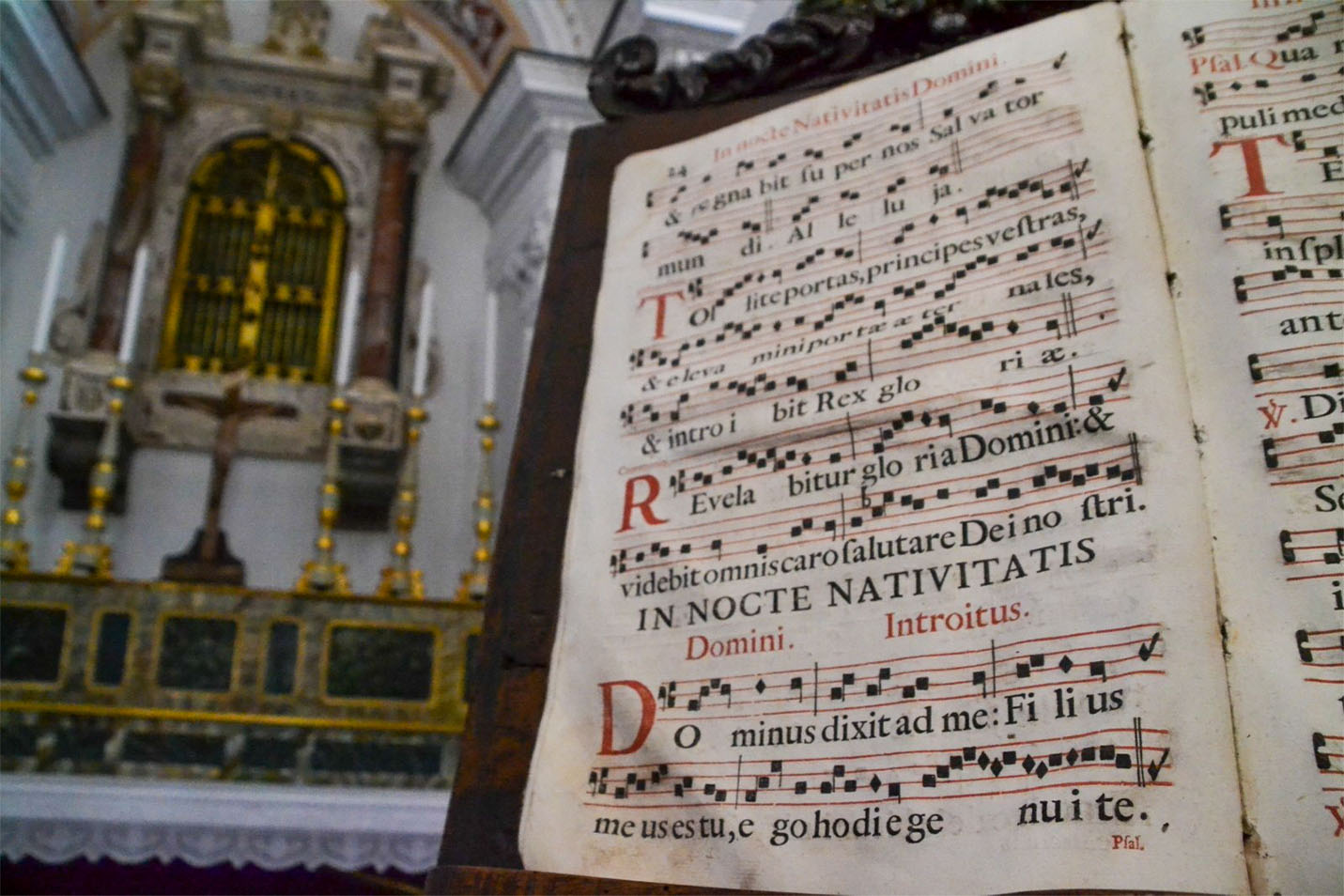
Then in 1648, the baron don Lorenzo Ventimiglia and his wife Maria Filangeri had a sumptuous marble altar and a sturdy iron case built at their expense, in honor of the Holy Thorns, which was placed in their private chapel, inside the Vecchia Matrice which in 1873 were uprooted and brought to the Nuova.
On the sides of the case were two angels (unfortunately not found), one of which bore the coat of arms of Gratteri, depicting a dove drinking in a spring, with the inscription around it: “Tuere Nobile Gratterium”.
Even today, holy relics are kept inside this wrought iron case: four thorns from the Crown of Christ; a fragment of the wood of the Cross; a cutout of the chlamys in which Christ was clothed during the scourging and a relic of St. James, consisting of a side bone (Vedasi Anselmo S.,Margiotta R., I Tesori delle chiese di Gratteri, Palermo 2005).
Overlaid on the case reads:
“MARMORE SUB GELIDO PATIENTIE SPICULA AMORIS HIC CRUX, HIC SPINEE PURPURA VESTIS ADEST”.
LORENZO VENTIMIGLI E MARIA FILANGERI CONTI DI COLLESANO E BARONI DI GRATTERI E S. STEFANO. 1684
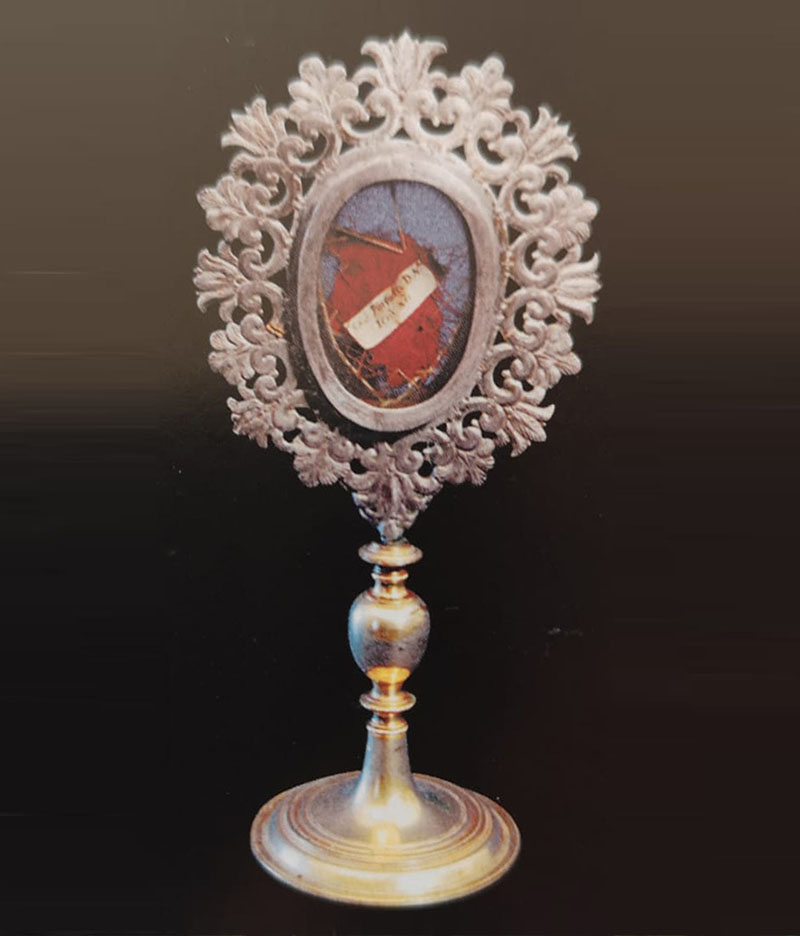
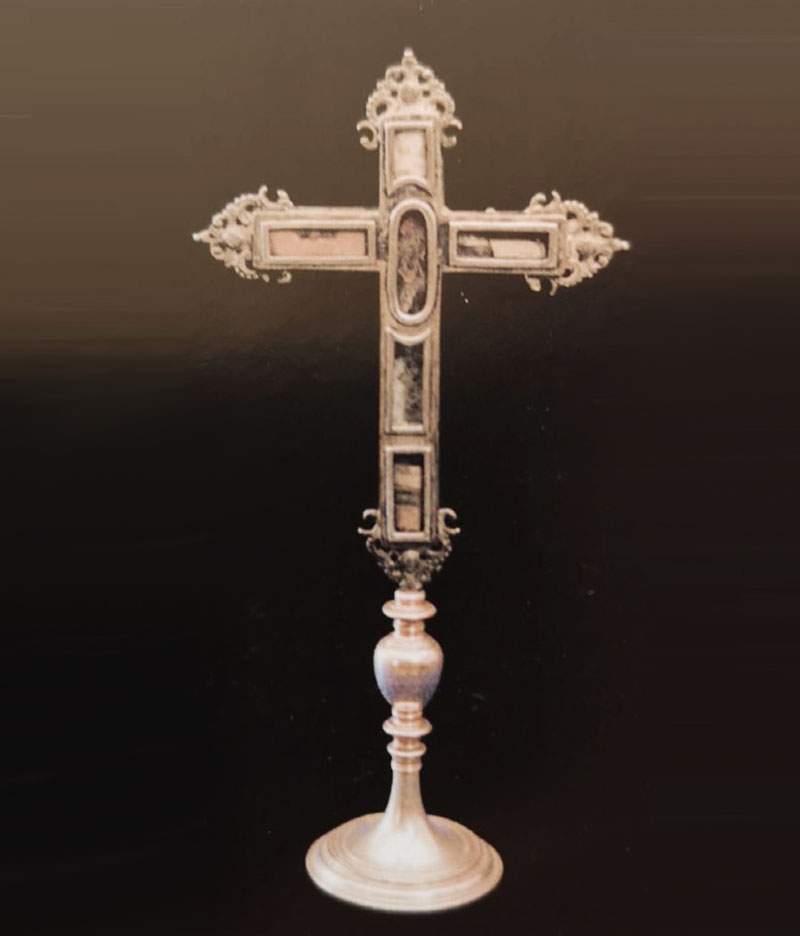
Until a few years ago the people from Gratteri, on the occasion of natural calamities such as sirocco wind and drought, still exposed the Holy Thorns so that the Lord would stop these scourges. At the sound of the bell of the Chiesa Madre (named for the note of the SS. Thorns), the parish priest exhibited the silver reliquary to the faithful and gave the holy blessing.
In the past, the keys of the Sacred Thorns were kept directly by the archbishop of Palermo and had to be sent for request. It is said that as soon as the reliquary came out of the church, the Lord either made the rain stop, if it had fallen abundantly, or made it more abundant, if it was needed “(Ganci Battaglia 1930, p.36).
However, there are several popular legends collected over the years among the oldest inhabitants of Gratteri that report legendary tales handed down for generations. One of these tells of an angel, with the appearance of a knight, who, during a difficult period, gave a casket with precious relics to a poor farmer on the way of San Giorgio. A chest with holy relics with miraculous powers arrived with a ship that landed in Roccella.
Before disappearing, this stranger pronounced a passage in Latin to be engraved on the altar as a perennial memory. The miracle was immediately shouted. To commemorate the event, a small church dedicated to the Crucifix was erected in this district, built over a reliquary altar in the rock embellished with a crusader palio (Giacomo Lanza, born in 1909; Fedele Cirincione, born in 1911).
The poor peasants did not understand the meaning of these words by interpreting that Latin formula in a misleading way – “Gratteri tu eri nobile” (Gratteri you were noble) – probably alluding to a glorious past to mitigate the sadness of the present state. In fact, the literal meaning of that expression would be: “Proteggi il rinomato (oppido) di Gratteri” (protect the renowned Gratteri) (Vedasi Terregino G., Nobile Gratterium tuere, in gratteri.org). But from what and why was it urged to protect that famous fortress Baronia dei Ventimiglia? We do not know about this.
In any case, there were several foreigners who in the past tried to steal the precious treasure but it is said that they were swept away by a raging wind and met horrendous curses up to their seventh generation, “settima jnì” (Giuseppe Cirincione, born in 1918). One of these legends is reported by Giuseppe Ganci Battaglia, poet of the Madonie, and by another local historian, Isidoro Scelsi who calls it the “miracle of the wind“:
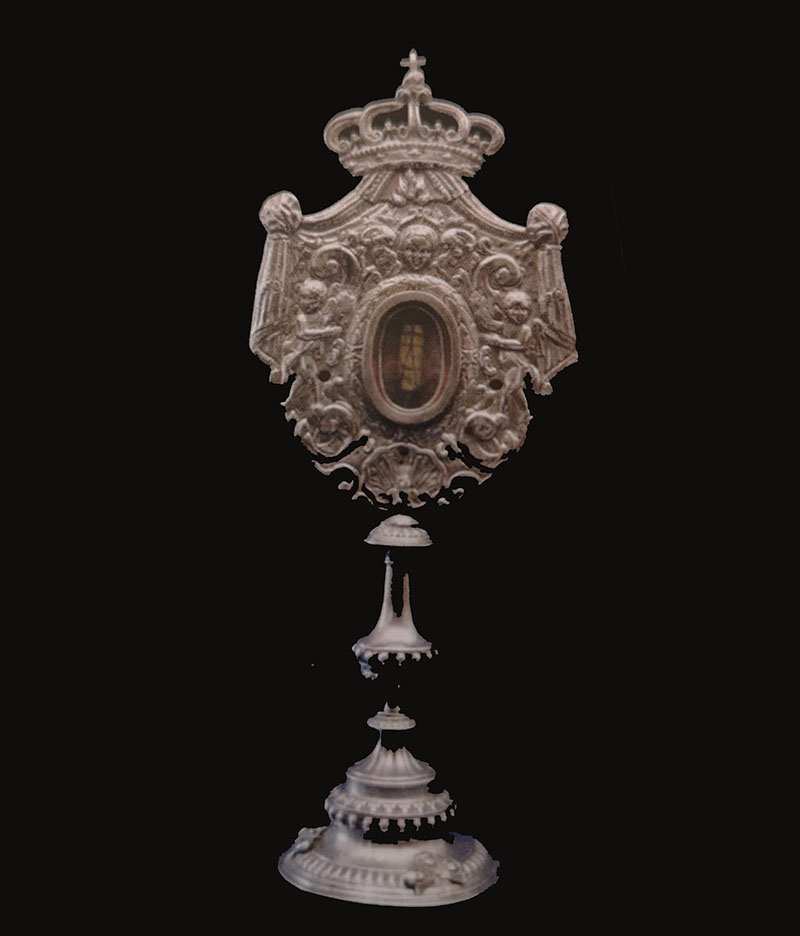
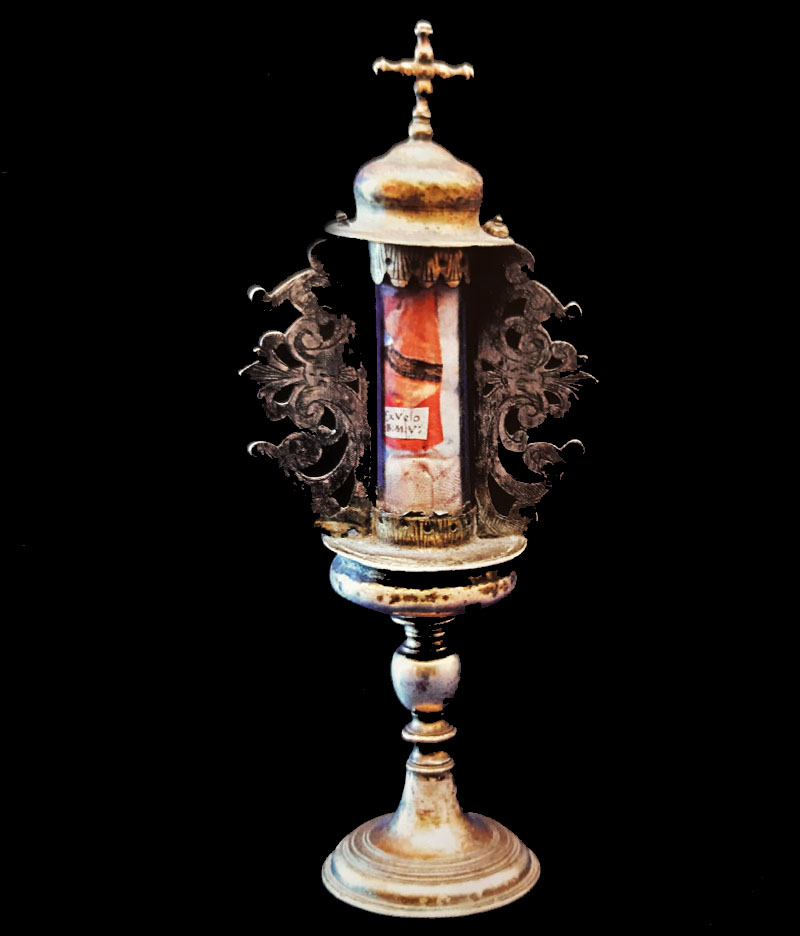
It is said that around 1400, on a Saturday night, two unknown strangers are sneaked in in the old Matrix and have stolen the reliquary containing the SS. Thorns. Committed the sacrilegious theft and after passing the crags behind the Church, in the “Cozzo della Scala”, from where they were about to take the road that leads to Collesano, an impetuous sirocco wind forced them to throw themselves on the ground to avoid being bumped into the horrid adjacent precipices.
And so, clinging to each other, they spent the night, forced into total immobility due to the wind. In this position they were found early the next morning by peasants who went to the countryside. The two unfortunates wondered why those villagers did not feel the raging wind while they felt all its hideous strength.
Approaching to lift them off the ground, the peasants noticed that there was a footprint under the jacket of one of the strangers. Recognizing the precious reliquary, they removed it to bring it back to the church. As if by magic, the wind stopped immediately, making it easier for the two thieves to escape towards their country. It was the first Sunday in May (Scelsi 1981, p. 112).
According to Scelsi himself, this event could be considered really happened both because the feast of the Holy Thorns is still celebrated today on that date and because starting from 1387 and until a few years ago, whenever the sirocco wind raged, the Gratterese population went to church to ask for the exposure of the SS. Spine (Ibidem).
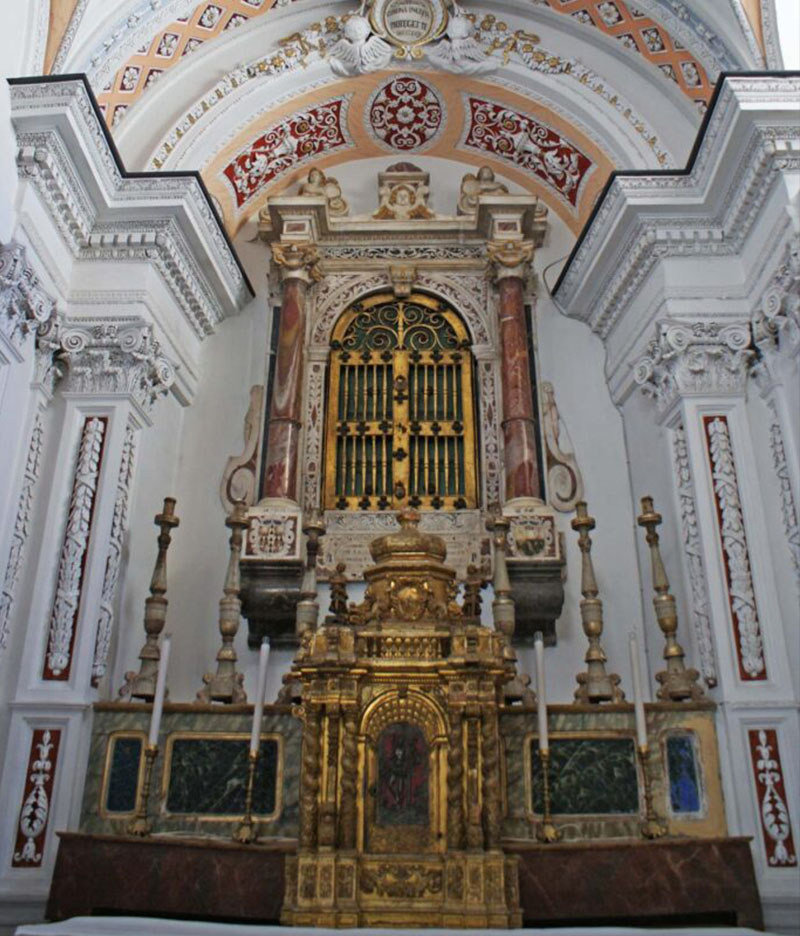
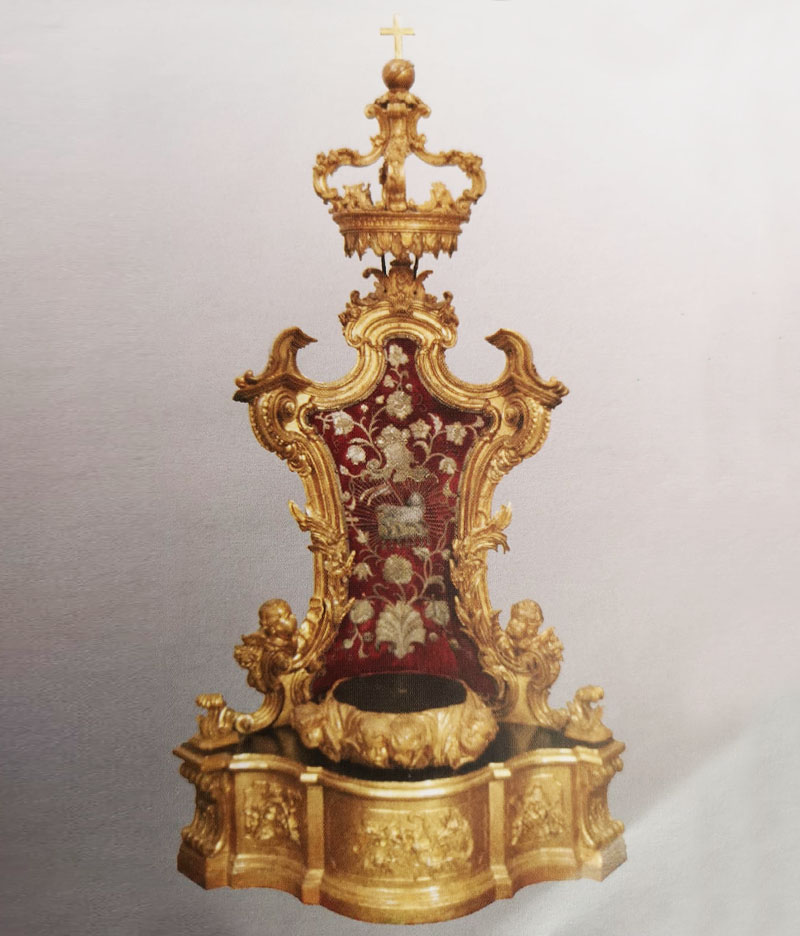
Marco Fragale
(Università di Palermo)
Bibliografia:
ANSELMO SALVATORE, MARGIOTTA ROSALIA, I Tesori delle chiese di Gratteri, Salvatore Sciascia Editore, Palermo, 2005
BIANCA ALESSANDRO, Manoscritto che si conserva in casa Serio a Cefalù
CARANDINO BARTOLOMEO, Descriptio Ecclesiae Cephaledanae, Mantova 1592
FRAGALE MARCO, tesi di laurea in Lettere Moderne: Il ciclo dell’anno a Gratteri. Aspetti devozionali e significato antropologico. Università degli Studi di Palermo – A.A. 2006/07
GANCI BATTAGLIA GIUSEPPE, Cenni storici e tradizionali del Comune di Gratteri – Ed. La Trazzera, Palermo 1930
IMBRAGUGLIO NICOLA, Cose e Storie di Gratteri: Il Mistero delle Spine della corona di Cristo razziate a Cefalù o regalate dal vescovo? Il Giornale di Sicilia, 19 aprile 1988.
PASSAFIUME BENEDETTO, De origine ecclesiae cephaleditanae, Venezia, 1645
PIRRI ROCCO, Sicilia Sacra, Palermo, 1733
SCELSI ISIDORO, Gratteri. Storia, cultura e tradizioni, Palermo 1981 rist. Tip. Valenziano, Cefalù, 2008
TERREGINO GIUSEPPE, Il Barone usurpatore e il Vescovo santo, in gratteri.org, aprile 2018
TERREGINO GIUSEPPE, Nobile Gratterium tuere, in gratteri.org, aprile 2020


